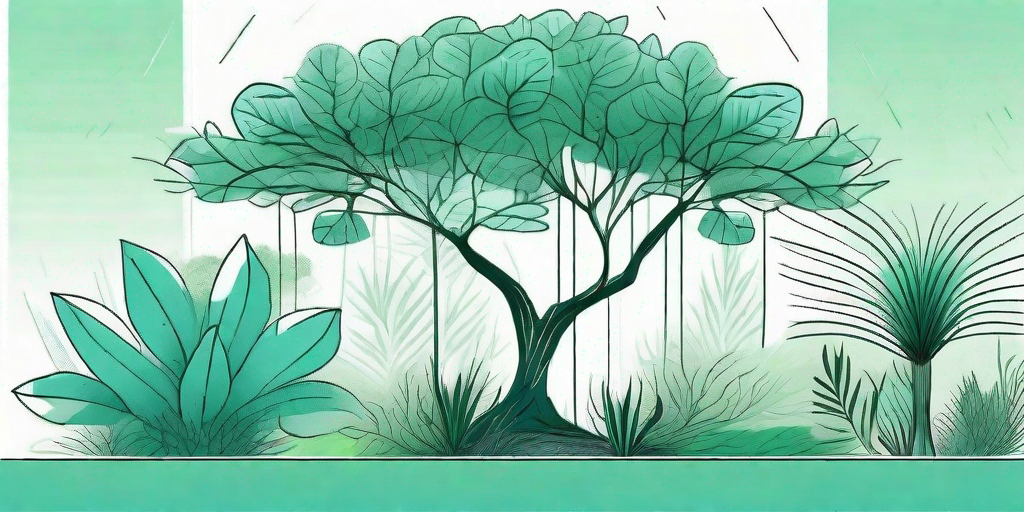
Welcome to the secret world of shady business. No, we're not talking about dodgy deals or under-the-table transactions. We're talking about the art of successfully growing plants under trees. It's a world where sunlight is a luxury, and the soil is as rich as a billionaire. But fear not, dear reader, for this is a world where even the most novice gardener can thrive.
The Art of Shade Gardening
Shade gardening is a bit like being a parent to a teenager. It requires patience, understanding, and the ability to adapt to changing moods. But just like raising a teenager, the rewards can be immense. A well-planned shade garden can be a lush, green oasis, a sanctuary of calm and tranquility. But how do you create such a paradise? Let's dive in.
Firstly, it's important to understand the different types of shade. There's dappled shade, partial shade, full shade, and deep shade. Each type of shade requires a different approach and different types of plants. For example, plants that thrive in dappled shade may struggle in deep shade. So, the first step in your shady business is to assess the type of shade you're dealing with.
Types of Shade
Dappled shade is like the Goldilocks of the shade world. It's not too hot, not too cold, but just right. This type of shade is created by the sun filtering through the leaves of trees. It's the ideal environment for many types of plants, including ferns, hostas, and astilbes.
Partial shade is when an area gets 3-6 hours of sun per day, usually in the morning or late afternoon. Plants that love partial shade include hydrangeas, rhododendrons, and camellias.
Full shade is when an area gets less than 3 hours of sun per day. This can be a challenging environment for many plants, but there are some that thrive in these conditions, such as foxgloves, hellebores, and bleeding hearts.
Deep shade is the most challenging type of shade. This is when an area gets no direct sunlight at all. But even in these conditions, there are plants that can survive and thrive, such as ivy, vinca, and certain types of ferns.
Choosing the Right Plants
Now that you've assessed your shade situation, it's time to choose your plants. This is where the fun really begins. It's like being a kid in a candy store, but instead of candy, you're choosing plants. And instead of a store, you're probably at a nursery or garden center. But you get the idea.
When choosing plants for your shade garden, there are a few things to consider. Firstly, you need to choose plants that are suitable for your type of shade. Secondly, you need to consider the soil conditions. And thirdly, you need to think about the overall design of your garden. Let's explore these factors in more detail.
Matching Plants to Shade
As we mentioned earlier, different plants thrive in different types of shade. So, it's important to match your plants to your shade. For example, if you have dappled shade, you might choose ferns, hostas, and astilbes. If you have partial shade, you might choose hydrangeas, rhododendrons, and camellias. If you have full shade, you might choose foxgloves, hellebores, and bleeding hearts. And if you have deep shade, you might choose ivy, vinca, and certain types of ferns.
Considering Soil Conditions
Just like humans, plants have different dietary needs. Some plants like rich, fertile soil, while others prefer poor, sandy soil. Some plants like acidic soil, while others prefer alkaline soil. So, before you choose your plants, it's important to know what type of soil you have.
You can test your soil using a soil testing kit, which you can buy from most garden centers. Once you know what type of soil you have, you can choose plants that will thrive in those conditions.
Designing Your Shade Garden
Designing a shade garden is a bit like painting a picture. You need to think about color, texture, and form. You need to consider how the plants will look together, and how they will look throughout the year. You also need to think about how the plants will fit into the overall design of your garden.
When designing your shade garden, it's a good idea to start with the larger plants, and then fill in with smaller plants. You might also want to include some hardscaping elements, such as a path or a bench, to create interest and provide a place to sit and enjoy your garden.
Frequently Asked Questions
What are some good plants for shade?
There are many plants that thrive in shade, including ferns, hostas, hydrangeas, rhododendrons, camellias, foxgloves, hellebores, bleeding hearts, ivy, and vinca.
Can I grow vegetables in shade?
Yes, some vegetables can grow in shade, including lettuce, spinach, kale, and other leafy greens. However, most vegetables need at least 6 hours of sun per day to produce a good crop.
Do I need to water my shade garden more often?
Not necessarily. In fact, shade gardens often require less watering than sun gardens, because the shade helps to keep the soil moist. However, you should still check the soil regularly and water as needed.
Conclusion
So there you have it, the shady business of growing plants under trees. It's not as daunting as it might seem, and with a bit of planning and patience, you can create a lush, green oasis in your own backyard. So why not give it a try? After all, everyone loves a bit of shady business.















